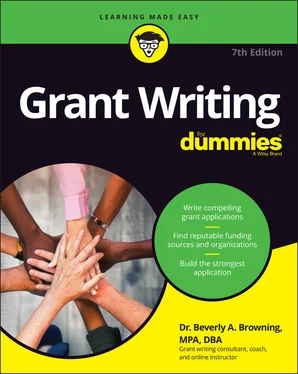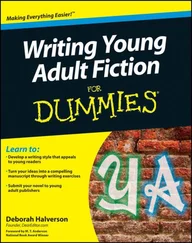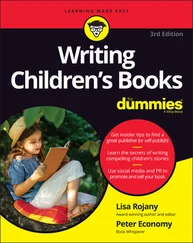Beverly A. Browning - Grant Writing For Dummies
Здесь есть возможность читать онлайн «Beverly A. Browning - Grant Writing For Dummies» — ознакомительный отрывок электронной книги совершенно бесплатно, а после прочтения отрывка купить полную версию. В некоторых случаях можно слушать аудио, скачать через торрент в формате fb2 и присутствует краткое содержание. Жанр: unrecognised, на английском языке. Описание произведения, (предисловие) а так же отзывы посетителей доступны на портале библиотеки ЛибКат.
- Название:Grant Writing For Dummies
- Автор:
- Жанр:
- Год:неизвестен
- ISBN:нет данных
- Рейтинг книги:3 / 5. Голосов: 1
-
Избранное:Добавить в избранное
- Отзывы:
-
Ваша оценка:
- 60
- 1
- 2
- 3
- 4
- 5
Grant Writing For Dummies: краткое содержание, описание и аннотация
Предлагаем к чтению аннотацию, описание, краткое содержание или предисловие (зависит от того, что написал сам автор книги «Grant Writing For Dummies»). Если вы не нашли необходимую информацию о книге — напишите в комментариях, мы постараемся отыскать её.
Grant Writing For Dummies
Grant Writing For Dummies
Grant Writing For Dummies — читать онлайн ознакомительный отрывок
Ниже представлен текст книги, разбитый по страницам. Система сохранения места последней прочитанной страницы, позволяет с удобством читать онлайн бесплатно книгу «Grant Writing For Dummies», без необходимости каждый раз заново искать на чём Вы остановились. Поставьте закладку, и сможете в любой момент перейти на страницу, на которой закончили чтение.
Интервал:
Закладка:
Look for a link to the Full Announcement on the Related Documents tab in the View Grant Opportunity page (the same link you clicked to view the Synopsis). Figure 4-1 shows you what to expect when you’re on the Grants.gov site, perusing a NOFA, RFP, FOA, or RFA.

Source: https://www.dummies.com/business/nonprofits/grants/how-to-figure-out-differences-among-types-of-federal-grants/
FIGURE 4-1:How to figure out differences among types of federal grants.
 The one major disadvantage to applying for a direct grant award is that they’re tough to win. You compete with other grant applicants from the 50 states and all the U.S. territories. If the feds are only planning to award money to ten grant applicants, your chances are slim — even with a stellar funding request. You may even be competing with state agencies, which further narrows your chances. Urban and rural poverty pockets receive first priority for most social-services-related program funding (such as housing, education, and health and human services) and other grantmaking areas earmarked for social-issue hot spots. If you aren’t proposing services in one of these high-needs geographic funding areas, your chances of winning a federal grant from a competition that gives 5 to 25 extra review points to high-needs, census-data-supported geographic areas are reduced to almost nothing. Not all funding programs have these types of service priorities.
The one major disadvantage to applying for a direct grant award is that they’re tough to win. You compete with other grant applicants from the 50 states and all the U.S. territories. If the feds are only planning to award money to ten grant applicants, your chances are slim — even with a stellar funding request. You may even be competing with state agencies, which further narrows your chances. Urban and rural poverty pockets receive first priority for most social-services-related program funding (such as housing, education, and health and human services) and other grantmaking areas earmarked for social-issue hot spots. If you aren’t proposing services in one of these high-needs geographic funding areas, your chances of winning a federal grant from a competition that gives 5 to 25 extra review points to high-needs, census-data-supported geographic areas are reduced to almost nothing. Not all funding programs have these types of service priorities.
Using the eligible applicant criteria to track the funding stream
Pass-through grants have two advantages:
When you apply for pass-through grant funds at the state level, you compete against other grant applicants in your state only. As a result, you encounter considerably less competition than at the federal, direct grantseeking level.
When you’re making an appearance before the state agency program staff, you can get info on previously funded grants. Under the Freedom of Information Act (FOIA), all government agencies must provide requested public information to the requestor (you, the public), so don’t feel like you’re being a bother. Make sure the list contains the grant recipients and award amounts. And ask for a copy of a successful grant application from a previous competition. Knowing how winners write can boost your chances. You can use the FOIA to obtain information about all types of grants funded by any government agency.
The only disadvantage to applying for pass-through grants is that the grant awards are often smaller than those for a direct grant. The legislation determines the award allocation. So, it’s a trade-off: Pass-through awards are smaller, but they’re also easier to win.
Pass-through grant awards can be significantly smaller than direct grant awards because the state takes money off the top of each federal grant to cover administrative costs. Then the amount that’s left must be divided geographically and politically. For example, grants may go to certain areas of a state or territory because those areas haven’t won many grant awards recently. The money may go to other areas because that district’s state senator or representative has a lot of power and influence with a state agency. Like it or not, politics can have a major influence over grantmaking.
Knowing the difference between competitive and formula grants
To win a competitive grant or cooperative agreement, you must compete with other grant applicants for a limited amount of money. A team of peer reviewers (experts and laypeople who apply to read and score grant applications) looks at your application and decides how many points you receive for each narrative section in the body of the grant request. The applications with the highest scores are recommended for funding. (See Chapter 11for details on the peer review process for grant applications.)
A formula grant (a fill-in-the-blanks, no-brainer form), on the other hand, is money disbursed by a state agency or municipality to a grant applicant based on a preset standard or formula.
A great example of formula monies is a grant program administered by the U.S. Department of Justice. The Justice Assistance Grant (JAG) Program (not to be confused with the military’s Judge Advocate General Program) is the leading source of federal justice funding to state and local jurisdictions. The program provides monies to states, territories, tribes, and local governments, which they in turn use to support program areas including law enforcement, prosecution and courts, prevention and education, corrections and community corrections, drug treatment and enforcement, planning, evaluation, technology improvement, and crime victim and witness programs. All JAG allocations are calculated by the Bureau of Justice Statistics (BJS) based on the statutory JAG formula and displayed on the JAG website each fiscal year.
Learning your way around Grants.gov
Every day you can receive a free email alert from Grants.gov announcing grantfunding opportunities from any of the federal grantmaking agencies. Just log on and subscribe. Simply choose one or more agencies and wait 24 hours to start cruising through the daily list of federal grant announcements.
Here’s how Grants.gov can help you find federal grant monies for your organization:
You can search for current and past grantfunding opportunities. Log on daily and check for postings in your area of interest. A subject search (for example, “housing,” “legal services,” or “after-school programs”) is the easiest way to narrow down specific grant competitions in your project or program area. I like to use the Newest Opportunities tab on the homepage. It allows you to double-check for federal funding availability alerts you may have missed.
You can register for notification of grant opportunities. Subscribe to a daily email alert. Look for the Manage Subscriptions link at the upper right of the homepage.
You can browse through the Applicants tab (at the top of the homepage) to look at all sorts of materials. For example, you can learn about the Grants.gov workspace, apply for grants, track your application, or click one of the resource links for grant eligibility, individual and organization registrations, applicant tools and tips, applicant FAQs, submitting UTF-8 special characters in your upload filenames, Adobe software compatibility, and encountering error messages.
You can also apply for grants directly through Grants.gov after you’ve reviewed the Apply for Grants link under the Applicants tab and completed the registration process.
 You must be registered in order to upload your grant application documents to Grants.gov.
You must be registered in order to upload your grant application documents to Grants.gov.
After registering, you can do the following:
Prepare to apply for grants. Click the link provided for a grant and read the full announcement. If it fits your organization, you can download the grant application package.
Access active grant application packages. In addition to the required forms, you can also access lists of FAQs regarding each grant. Usually, these questions originate at the funding agency’s technical assistance call or webcast (see the earlier section “ Discovering direct grants” for more on these discussions).
Download, complete, and submit grant application packages online through the e-grant system portal. Grants.gov gives you links to download the grant application forms or complete the forms online. You can also submit your entire grant application online, including uploading your narrative and attachments in the requested formats.
Читать дальшеИнтервал:
Закладка:
Похожие книги на «Grant Writing For Dummies»
Представляем Вашему вниманию похожие книги на «Grant Writing For Dummies» списком для выбора. Мы отобрали схожую по названию и смыслу литературу в надежде предоставить читателям больше вариантов отыскать новые, интересные, ещё непрочитанные произведения.
Обсуждение, отзывы о книге «Grant Writing For Dummies» и просто собственные мнения читателей. Оставьте ваши комментарии, напишите, что Вы думаете о произведении, его смысле или главных героях. Укажите что конкретно понравилось, а что нет, и почему Вы так считаете.












